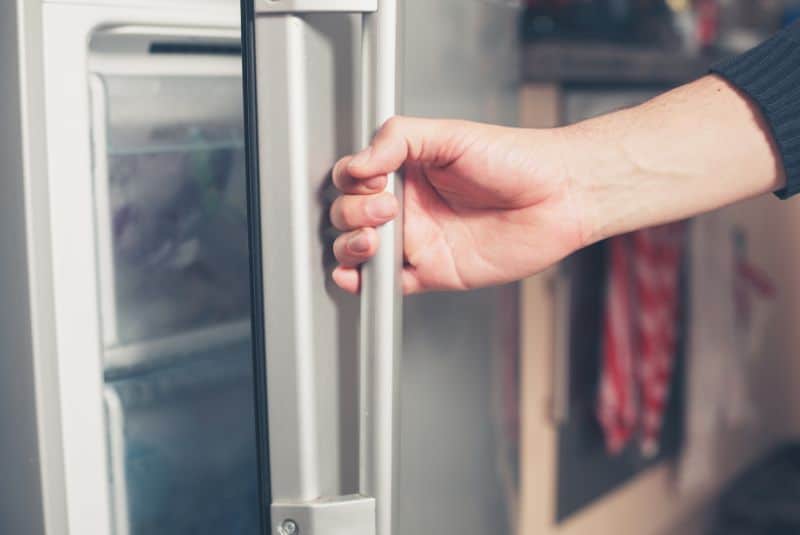You might have seen some TikToks recently claiming that freezing bread can actually make it healthier, and they say there’s even research to back this up.
But let’s break down whether this kitchen hack is as revolutionary as it sounds.
Here’s the science: when bread bakes, the moisture and heat transform the dough into a fluffy loaf by causing the starches in the flour to swell up and gelatinize.
This process is similar to what happens when you thicken a sauce with flour.
The result? Starches that your body can easily digest, turning them quickly into glucose (sugar).

This quick conversion can cause a spike in insulin, which is crucial for helping cells use glucose for energy or store it for later.
However, high insulin levels right after eating can make you hungrier and may lead to weight gain if it happens often.
Now, here’s where freezing comes into play: when you cool down foods with gelatinized starches, like bread, those starches contract and form what’s called resistant starch.
This type of starch resists digestion, making it harder for our bodies to break it down and absorb the sugars, potentially reducing those spikes in blood sugar and insulin.
Freezing accelerates this process even more than just refrigerating, creating more resistant starch.

Plus, freezing keeps bread moist and soft by trapping water inside, which is better than storing it in the fridge where it can dry out and harden.
So, while the health benefits of freezing bread aren’t earth-shattering, they do add a slight nutritional edge, especially in controlling blood sugar levels.
Plus, it keeps your bread fresher longer. Not a bad deal, right?
What Does Science Say About Frozen Bread Benefits?
A study involving ten healthy individuals focused on how freezing white bread, both store-bought and homemade, and then toasting it, affects blood sugar levels.

They found that for homemade bread, freezing and then thawing it decreased the blood sugar spike by 31% over two hours. Interestingly, even toasting fresh bread reduced the glucose increase by 25%.
The impact was more pronounced when homemade bread was frozen, thawed, and then toasted—cutting the blood sugar response by 39%.
This could potentially curb hunger since glucose and insulin levels won’t soar as much after eating.
However, when it came to commercial, store-bought white bread, freezing before toasting didn’t improve the blood sugar response.
This might be due to differences in ingredients or the bread-making process, which could influence how resistant starch forms when the bread is frozen.
The results aren’t entirely definitive yet.

Further studies have echoed similar findings, suggesting that the impact of freezing bread is both consistent and well-researched in scientific settings.
But it’s important to remember that these effects are short-lived, lasting just a few hours after eating.
So, while freezing your bread might help manage blood sugar levels for one meal, and maybe slightly impact the next, the long-term influence on appetite, weight gain, or disease risk like type 2 diabetes is likely minimal.
Resistant starch, which is also found in other chilled, cooked starchy foods like potatoes, pasta, and certain rice varieties (Basmati, for instance, creates more resistant starch compared to fluffier types like Arborio), not only makes starch harder to digest but also nourishes colon microbes.
This helps maintain a healthy gut flora, which in turn supports a healthy metabolism by producing beneficial chemicals.
Moreover, resistant starch can enhance insulin sensitivity, aiding our body in using blood sugar more effectively—a boon for overall health.

It’s also been linked to lower cholesterol levels, thanks to short-chain fatty acids produced when gut bacteria ferment the starch, potentially reducing the risk of heart disease.
Though these benefits seem significant, their actual long-term health impact is modest.
However, freezing your bread still offers advantages, like cutting down on food waste and providing these subtle health perks—even if they’re small.
Further reading:
- https://www.sciencedirect.com/science/article/pii/S0268005X22006592
- https://www.nclinmed.com/article_178948.html
- https://www.sciencedirect.com/science/article/abs/pii/S0308814617301516
- https://pubmed.ncbi.nlm.nih.gov/24195618/
- https://onlinelibrary.wiley.com/doi/abs/10.1002/jsfa.6966
- https://www.sciencedirect.com/science/article/pii/S2590157524000051?via%3Dihub
- https://link.springer.com/article/10.1007/s00125-003-1081-0
- https://www.sciencedirect.com/science/article/abs/pii/S0271531717309570
- https://www.sciencedirect.com/science/article/abs/pii/S0308814622008573
- https://www.ahajournals.org/doi/full/10.1161/CIR.0000000000000743
